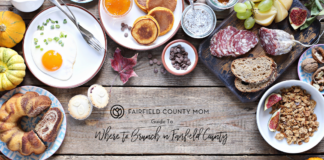 I was chopping vegetables when my three-year-old walked over and asked what I was cooking for dinner.
I was chopping vegetables when my three-year-old walked over and asked what I was cooking for dinner.
“Chicken stir fry!” I said, pointing to the bright mounds of peppers and tomatoes, eggplant and squash.
She started to pout.
“What’s wrong?” I asked, confused by why she wasn’t excited to eat one of her favorite foods.
But she wouldn’t answer. And so I continued chopping, finishing the vegetables, then reaching for a package of chicken.
And that’s when she lost it.
“Mommy, stop!” she said. “The chicken bird is sad! The chicken bird is sad because…because…because the chicken bird is dead!”
Big tears fell from her eyes as she said the words, her mouth falling with them as she looked to the ground.
I dropped the chicken and knelt down.
“Oh honey,” I said, wrapping my arms around her. While her comments were jarring, the conversation didn’t surprise me.
My other two children had figured out the connection between the chicken they eat and the chicken they see at the farm around this age too. And so, I sat down with my three-year-old and told her the exact words that had worked with my older kids.
“I know eating a chicken is very sad,” I said, “but this chicken had a nice life, and now we will eat it to stay healthy. It is normal to be sad thinking about the chicken, but that is why we pray before we eat and why we never waste food. Does that make sense?”
Through her tears, she nodded. “I guess,” she said.
“It’s okay to be upset, but it’ll be all right. I promise,” I said, rubbing her back. Then I led her to the family room before resuming my dinner preparation.
Back in the kitchen, I again grabbed the package of chicken, letting out a sigh of relief when I saw it wore the Certified Humane sticker. Not everything I cook has this, but seeing that small icon made me feel better that night. At least the chicken I would serve my daughter did indeed have a good life.
And so, casting aside my sadness for the chicken bird, I opened the package.
As I did, my youngest came running. “No, Mommy, no! Do not cut up that chicken bird!”
This time she was inconsolable, her breathing heavy, her skin warm. I grabbed the chicken and placed it in the fridge.
That night I made ravioli for dinner. And before bed, I tried to talk to my daughter again. She’d recently learned about birds in preschool and realizing we ate them made her sad.
I told her it was normal to feel sad, that I sometimes felt bad about eating animals. And then we talked about what birds eat – bugs, worms, seeds – and how birds eat plants and animals just like humans. How eating animals, especially those that have been treated well, can be healthy.
We talked until her eyelids grew heavy and her face calm, and I left her room, figuring the conversation was over. But the next day, she refused to eat chicken again. The day after, she ate a little, but then that night, at bedtime, she became upset.
“I ate the chicken bird because it was yummy, but now the chicken bird is sad!” she said.
I held her tight and told her it was okay as my mind raced. Was it right to keep offering her chicken if it made her so upset?
My youngest has always been a deep thinker. She asks questions about God, wants to know how everything is made, and will often keep probing until an answer makes sense to her. My rationale about chicken wasn’t adding up in her head. I wondered if I needed to break down my words more simply or if maybe, her rejection of them wasn’t a lack of understanding as much as a lack of agreement.
Was my daughter trying to tell me she wanted to be a vegetarian?
At only three years old, I knew she was way too young to decide. And yet to ignore her instincts felt wrong.
And so, reminding myself that much of childhood is a phase, I decided to approach the situation as I did other parenting challenges by taking it daily.
Having survived picky eating before, I headed to the grocery store and stocked up on healthy foods I knew my daughter liked, filling the house with peanut butter and canned beans and lots of milk and yogurt. Then I decided to follow her lead, offering my daughter our regular chicken dinner and an easy alternative each night. So far, she’s turned down most meals, even choosing a side of macaroni and cheese over her usual fast-food chicken nuggets.
However, experience has taught me that only time will tell if one day her current preferences will lead her toward vegetarianism or if they will wane as she gains the knowledge necessary to more fully evaluate her decision on whether to eat meat.

























